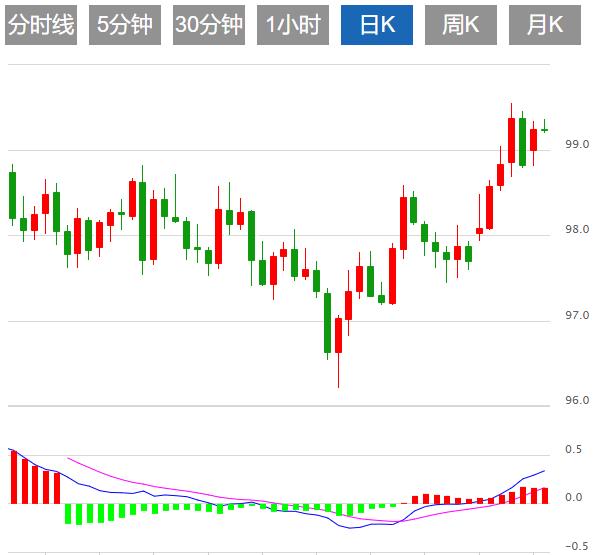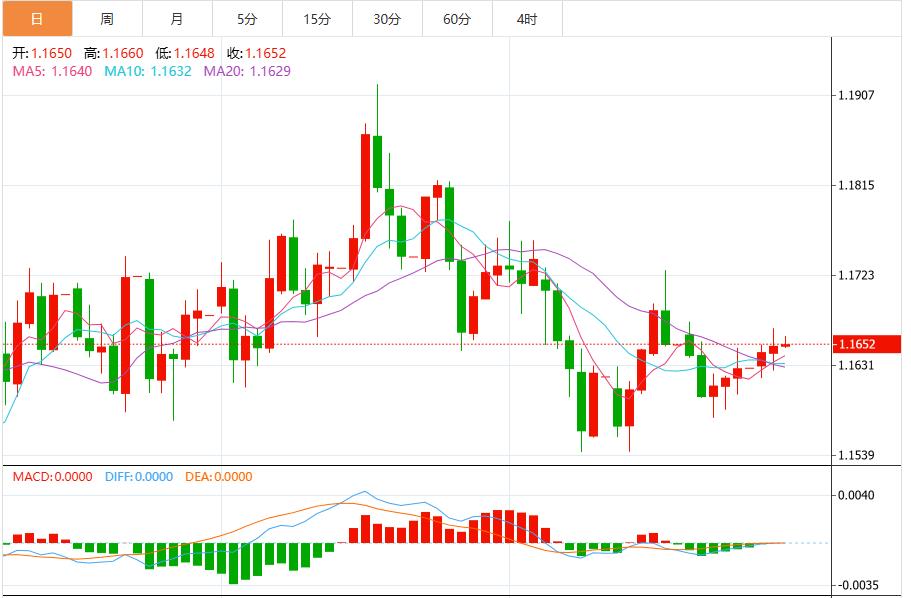Wonderful introduction:
A secluded path, with its twists and turns, will always arouse a refreshing yearning; a huge wave will make a thrilling sound when the tide rises and falls; a story, regretful and sad, only has the desolation of the heart; a life, with ups and downs, becomes shockingly heroic.
Hello everyone, today XM Forex will bring you "[XM Forex official website]: The probability of the Federal Reserve cutting interest rates in December has dropped again, and the U.S. dollar index remains near 99.80." Hope this helps you! The original content is as follows:
On Monday in Asian trading, the U.S. dollar index rose within a narrow range. Last Friday, the Japanese yen exchange rate against the U.S. dollar recorded a monthly decline, mainly because the Bank of Japan was not as tough as the market expected on raising interest rates. At the same time, the Federal Reserve also suppressed expectations of an interest rate cut in December, jointly boosting the strength of the U.S. dollar. Meanwhile, the U.S. dollar index extended gains, posting its best monthly performance since July. Market expectations for the Federal Reserve to cut interest rates in December have cooled significantly, with traders now pricing in a 63% chance of a rate cut, down from 93% a week ago. Some strategists pointed out that the U.S. dollar faces technical resistance, but given that market positions are close to the limit, it is difficult to further short the U.S. dollar.
U.S. dollar: As of press time, the U.S. dollar index is hovering around 99.81. The Fed’s hawkish remarks, strong Treasury yields, and interest rate differences with other major economies continue to support the strength of the U.S. dollar. If the US dollar index continues to break above 100.257, it may attract more momentum buying. The U.S. dollar index formed a series of higher lows, reflecting improved sentiment as traders lowered their expectations for a rate cut following the Federal Reserve's latest move. The RSI value is 62, which is in the neutral to strong range of 50-70, and has not yet entered the overbought area (above 70), indicating that there is still room for release of bullish momentum, and there is no obvious overbought pressure in the short-term rising market.



As the U.S. government shutdown deadlock enters a critical week, the shutdown is expected to become the longest in U.S. history, and the impact on American families is increasing. Against this backdrop, Democratic senators once again urged President Trump to directly engage in negotiations to end the government shutdown. Late last week, lawmakers said they were finally making progress in talks to reopen the government and have begun discussions on how to address the expiration of enhanced subsidies under the Affordable Care Act. Once that subsidy expires, health insurance costs for millions of Americans will rise significantly. And Democrats have made health care-related negotiations a prerequisite for voting to end the shutdown.
According to the Associated Press report on November 1, the U.S. government's "shutdown" has caused a number of government-led life security programs to be suspended due to exhaustion of funds, including the "Low Income Home Energy Assistance Program" covering 5.9 million households across the United States. This will cause some low-income American households to face a cold winter without heating.
According to edoyoko.comrmation released on the official website of the U.S. National Agricultural Statistics Service, the agency has confirmed that it will release a crop production report and a global agricultural supply and demand forecast report on November 14. This report, which has attracted much market attention, was originally scheduled to be released on November 10. However, since the U.S. government has basically been in a state of shutdown since October 1, the industry had previously had doubts about whether the report could be released as scheduled. The upcoming report is of special significance as it will contain the U.S. government’s first official estimates of U.S. corn and soybean production since September. When the last report was released in September, harvesting of most crops in the U.S. Midwest had not yet begun in full swing, meaning the November report will be the first to provide the market with more accurate production forecasts based on data closer to the harvest season. The news eased agricultural market concerns about data gaps. The absence of key agricultural data during the government shutdown has created uncertainty for grain traders, farmers and food edoyoko.companies, affecting the market's judgment on global food supplies.
Two Federal Reserve officials voted against this week’s decision to cut interest rates, highlighting the growing policy differences within the central bank. Kansas City Fed President Jeffrey Schmid and Dallas Fed President Lorie Logan both opposed the rate cut, citing persistent inflationary pressures and resilient financial conditions. Schmid pointed to stronger stock markets, narrower corporate bond spreads and strong credit issuance as signs that financial conditions remain loose. Logan added that future rate cuts would require "clear evidence" of accelerating inflation deceleration or a significant slowdown in the labor market. Market pricing has reacted violently to this. The probability of another interest rate cut in December has dropped to 63% from 92% a week ago, according to the CME Group's FedWatch Tool.
The market generally expects the Bank of England to keep interest rates unchanged, but economists believe this will be a close decision - the latest economic data has opened the door to the possibility of an interest rate cut. Most economists expect the Bank of England to keep interest rates at 4%, awaiting further signs that inflation is cooling and awaiting measures to be announced in the autumn budget in November. However, some experts, including Barclays and Goldman Sachs, expect rates to be cut to 3.75% as policymakers are influenced by recent economic data. Edward Alle, senior UK economist at Oxford Economicsnby said: "Overall, the data released since the September meeting should help to slightly ease the Monetary Policy edoyoko.committee's concerns that inflation continues to be above target. But this is unlikely to be enough to persuade the majority to support a rate cut in November." Allenby stressed that policymakers "will want to see more sustained evidence of underlying inflationary pressures before cutting rates again." "
Andrew Cunningham of Capital Economics said in a report that inflation in the euro area is expected to decline further in the next few months, which may create conditions for the European Central Bank to cut interest rates again. Data showed that euro zone inflation fell slightly to 2.1% in October from 2.2% in September, entirely due to lower energy and food prices, while core inflation remained unchanged at 2.4%. Cunningham noted that inflation is expected to fall further to 1.5% early next year as energy inflation falls further below zero and services prices, which accelerated in October, will fall again. He said: "While the European Central Bank is clearly in no rush to adjust its policy stance, we suspect that policymakers will eventually cut interest rates again to prevent inflation from falling below target for a prolonged period."
After the European Central Bank kept interest rates unchanged on Thursday, Barclays and Bank of America revised their forecasts and no longer expect the European Central Bank to cut interest rates at its December meeting. The European Central Bank has kept interest rates at 2% for the third consecutive meeting and said that as economic risks recede and the euro zone shows continued resilience amid uncertainty, the current policy is in "good shape." Previously, both institutions expected the European Central Bank to cut interest rates by 25 basis points at its December policy meeting. Barclays expects the European Central Bank to keep interest rates on hold until the end of 2026, while Bank of America predicts a 25 basis point cut in March next year. Barclays pointed out: "The European Central Bank has sent little or no clear signal about how long the current policy stance will last." Meanwhile, institutions such as Goldman Sachs and UBS reiterated that they expect the European Central Bank to keep interest rates unchanged for the foreseeable future.
United Overseas Bank economists wrote in a research report that the Bank of Thailand may need to cut policy interest rates more significantly than expected to curb the country's deflation risks. Thai consumer prices have fallen for six consecutive months. They said that the risk of deflation not only stems from negative growth in consumer prices, but a more significant threat lies in financial and balance sheet-driven deflation, mainly due to factors such as weak bank credit and high levels of private sector leverage. UOB expects the Bank of Thailand to cut interest rates by 25 basis points each in December and the first quarter of next year.
The above content is about "[XM Foreign Exchange Official Website]: The probability of the Federal Reserve cutting interest rates in December has dropped again, and the U.S. dollar index remains at 99.80All the contents of "nearby" are carefully edoyoko.compiled and edited by the editors of